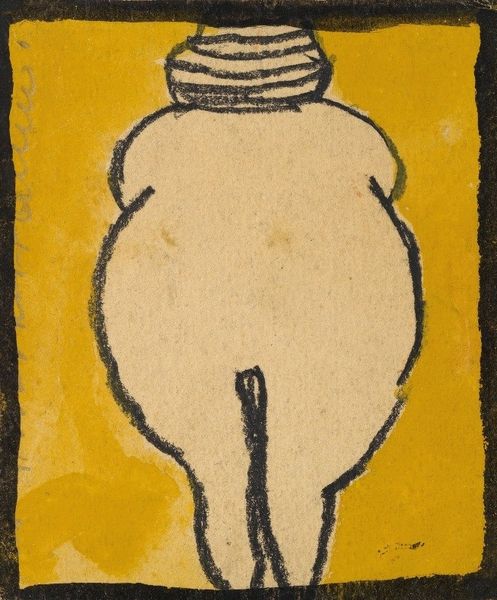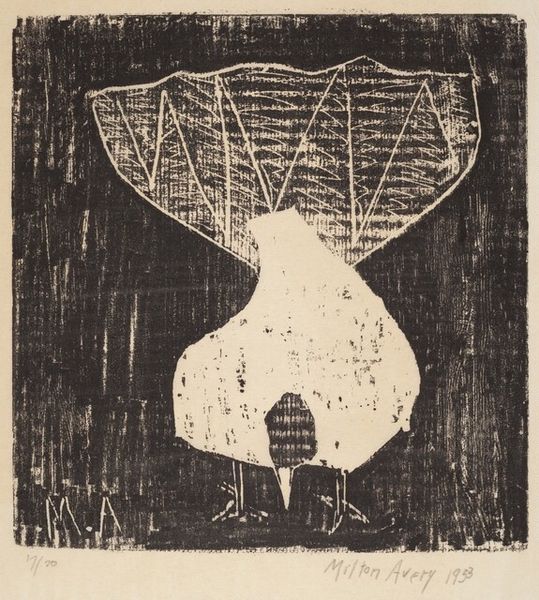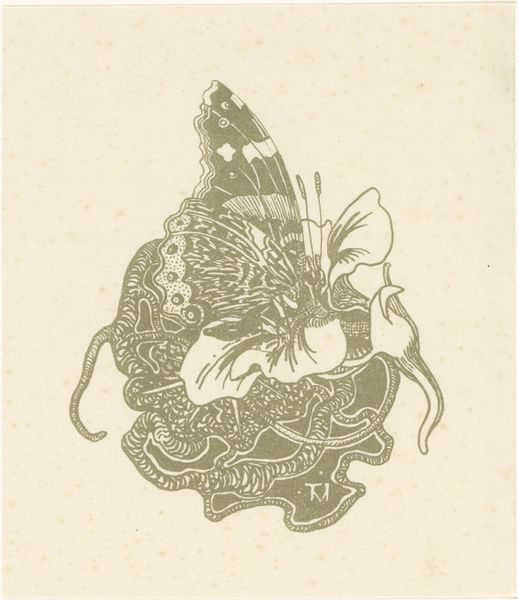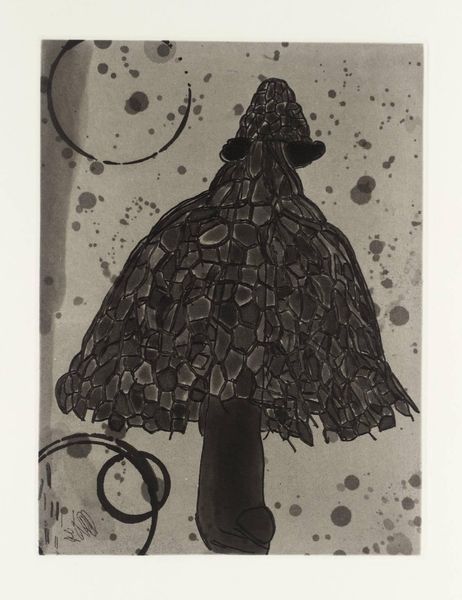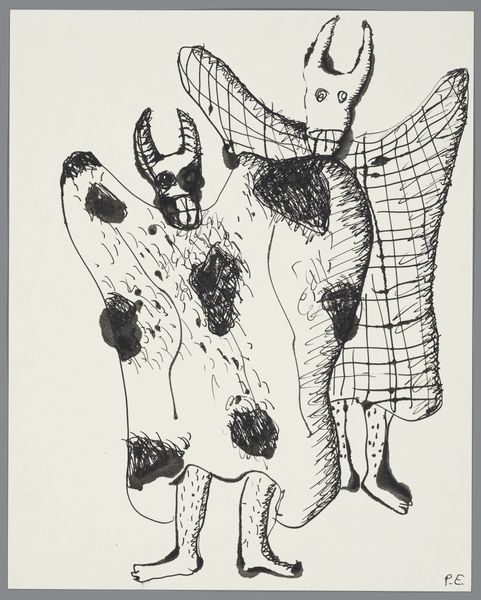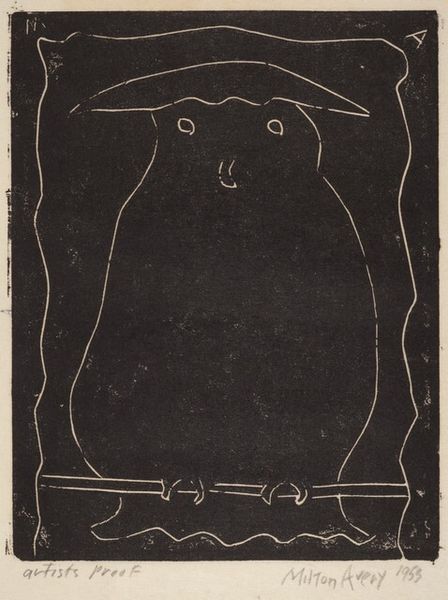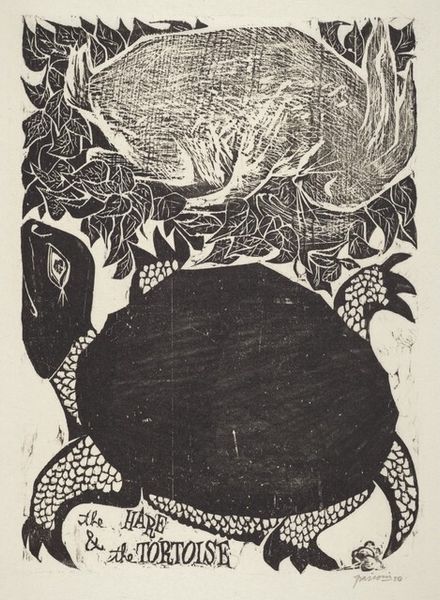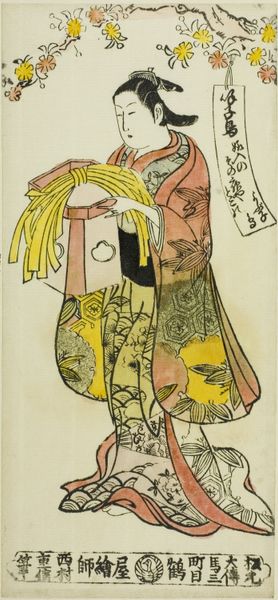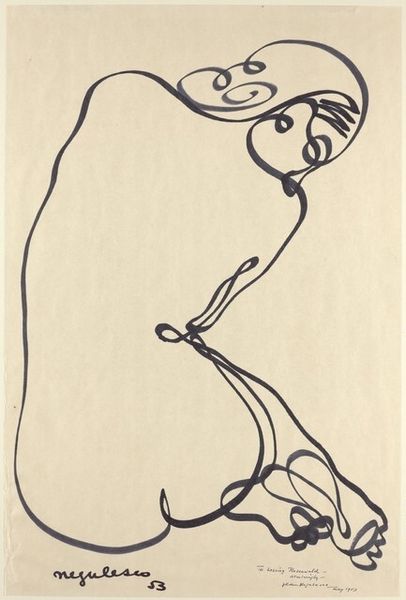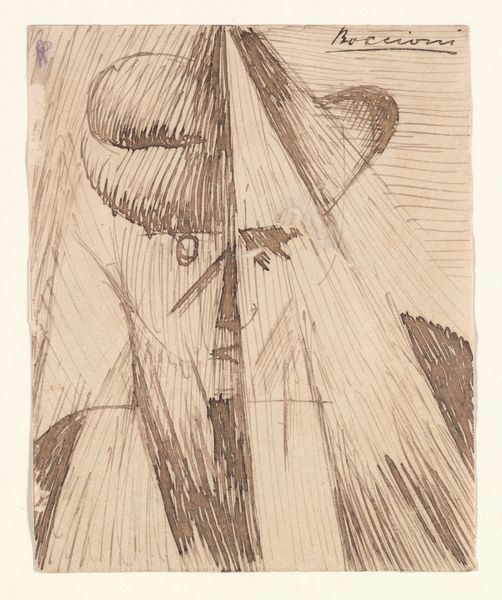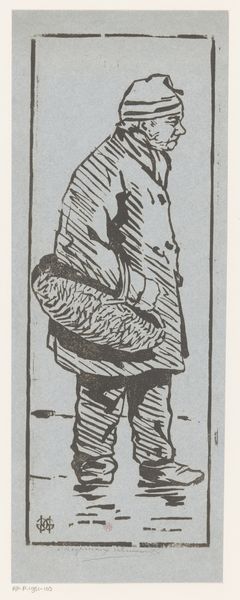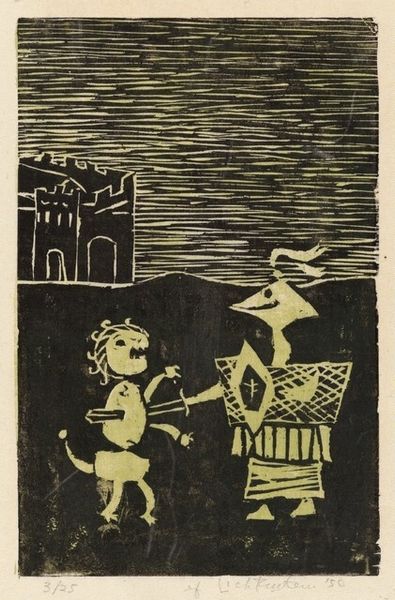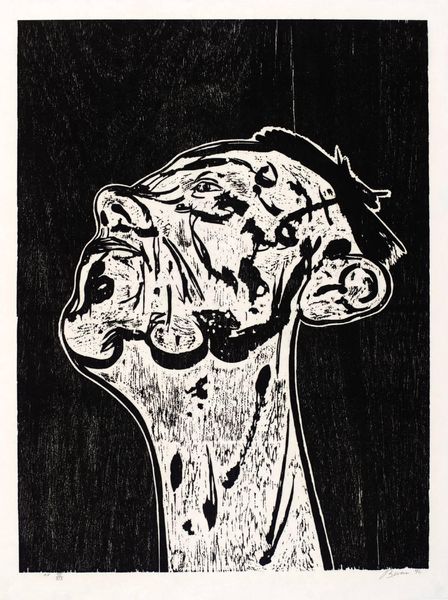
woodblock-print, print, ink, color-on-paper
#
quirky illustration
#
blue ink drawing
#
childish illustration
#
cartoon like
#
woodblock-print
# print
#
japan
#
cartoon sketch
#
personal sketchbook
#
ink
#
color-on-paper
#
sketchbook drawing
#
watercolour illustration
#
cartoon style
#
cartoon carciture
Dimensions: 10 3/16 × 6 13/16 in. (25.88 × 17.3 cm) (image)13 × 9 9/16 in. (33.02 × 24.29 cm) (mount)
Copyright: No Copyright - United States
Editor: So, this is Kamisaka Sekka’s “Samurai,” a color woodblock print from around the 1920s. It's deceptively simple, almost like a child’s drawing, but something about the posture feels weighted and serious. What do you see in this piece, beyond the obvious samurai imagery? Curator: It's interesting you mention the childlike quality. Sekka was working during a time of immense cultural shift in Japan. The Meiji Restoration sought to modernize the country, often at the expense of tradition. In that context, doesn’t the seeming naiveté of the figure speak volumes? Editor: I hadn't thought about it that way. So you’re saying the style is a commentary on the preservation of older traditions? Curator: Precisely. Consider the figure itself: while presented in a simplified form, the swords, the hat, the patterned kimono, all point to a carefully constructed identity. The very act of representing a samurai, even in this "cartoonish" style, could be seen as an act of cultural resistance against wholesale Westernization. Do you think this samurai embodies strength, or perhaps something else? Editor: That’s a good question. Now that you mention it, they do look kind of vulnerable. Curator: Perhaps Sekka is also critiquing the romanticized image of the samurai, stripping away the hyper-masculinity and presenting a more human, perhaps even feminized, version of the warrior? The soft lines and pastel colours definitely contribute to this interpretation. Editor: That completely changes my view. It's not just a historical depiction, it's a commentary on cultural identity and gender roles in a changing society. Curator: Exactly! Art provides an active lens, and encourages continuous questioning and contextualization. I'm glad you observed that Sekka encourages us to investigate the broader forces at play, to go deeper than the image itself and to discover hidden stories behind each artwork. Editor: I will definitely consider that for my research from now on! Thanks!
Comments
No comments
Be the first to comment and join the conversation on the ultimate creative platform.
